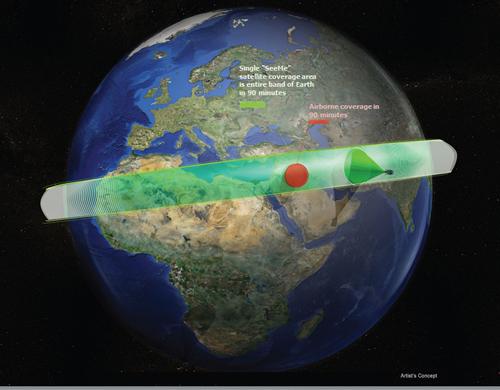May 16, 2012

The US military depends on satellites for communications and location-based information when soldiers are in remote areas of the world.
But what do soldiers do when there is no satellite within range, or they can't receive satellite downlinks? The Defense Advanced Research Projects Agency (DARPA) wants to solve that problem by designing disposable satellite clusters that the military can send into orbit cost-effectively and that will burn up when no longer in use, leaving no debris behind.
The SeeMe program aims to develop a constellation of small satellites that will cost a mere fraction of the millions current systems cost, according to DARPA. Soldiers will communicate directly with the satellites using handheld devices. One constellation will be comprised of about two dozen satellites designed to last 60 to 90 days in very low orbit.

An aircraft would take off and ascend to a cruising altitude and launch a missile that would enter into low-earth orbit. The missile's outer shell would then disengage from the missile to reveal the satellite inside, which would then enter its designated orbit. Once the SeeMe satellite clusters are in place, soldiers will be able to access communications with them within 90 minutes of their deployment, basically by pressing a button on a handheld device asking the system to "see me." Soldiers then will receive images of their precise location.
The military plans to use SeeMe satellites as an adjunct to current use of unmanned aerial vehicles (UAV) that provide location information and images. However, UAVs have limits in terms of range and time of use due to refueling needs, according to DARPA, which posted a video about the SeeMe program online. (Watch the video below.)
Rather than costing millions of dollars, as typical satellites do, DARPA aims to keep the cost of the satellites down to about $500,000 or less through design and the materials used to build them. The agency aims to use off-the-shelf components, such as those used in the mobile industry, to develop SeeMe satellites. Other technologies used in the design include advanced optics, power, propulsion, and communications technologies to keep the size and weight down, according to DARPA.
To send the satellites into orbit, DARPA is designing a companion low-cost, rapid-deployment satellite launch system called the Airborne Launch Assist Space Access (ALASA) program. The agency is currently soliciting initial technology proposals for the SeeMe program.
Related posts:
About the Author(s)
You May Also Like



